Fallout: Spies, Superbombs, and the Ultimate Cold War ShowdownDecember 2022

Sheinkin, Steve. Fallout: Spies, Superbombs, and the Ultimate Cold War Showdown. Roaring Brook Press: New York, 2021.
This history of the Cold War reads like a novel (but you can’t make this stuff up) and focuses on the main players at various crisis points in the era. From post-WWII spy trade to prisoner swaps to the Cuban Missile Crisis and the Berlin Wall, it’s all thrilling. Includes photographs, source notes, bibliography, and index.
It’s a must-have for any school serving students Grade 7 and up. Would also recommend to adults who will appreciate the overlap with other books and movies.
Dewey: 972.9106 Interest Level: Grades 6 – 12
Awards and Reviews: ALA Notable Children’s Books; Booklist starred, Bulletin of the Center for Children’s Books starred; Horn Books starred; Kirkus Reviews; New York Times; Publishers Weekly starred; Sibert Award, 2022; School Library Journal starred.
Younger readers might like: Cold War Correspondent (Nathan Hale’s Hazardous Tales, Book 11) by Nathan Hale
Fiction pairing: A Night Divided by Jennifer Nielsen
On the web: Find details on virtual tours of the Spy Museum!
Watch: Bridge of Spies (2015) from Stephen Spielberg. Rated PG-13.
Nonfiction Book Archives

New York: Roaring Brook Press, 2016
William "Buffalo Bill" Cody died 100 years ago next month, and Candace Fleming's interesting and very readable examination his legendary life is a great way to celebrate him. Presenting Buffalo Bill seems a fitting title for his story, as Bill was often angling for the perfect presentation of himself; always thinking about how events could be portrayed later to further his reputaton and fame. (After an unsatisfying job serving as a guide for General Custer and a Grand Duke from Russia, he inserted himself into a photo of the other two in a sort of 19th Century Photoshop treatment, and reworked the story of the hunt to suit his own needs.) The author even states in the Afterward that Bill's embellishment of events made research for this book challenging. Fleming turns this obstacle to her advantage, however, by featuring those research difficulties as sidebars throughout the book, labeling them "Panning for the Truth." The featurettes compare Cody's version of events with the historical record to estimate the relative amounts of truth and fiction.
It is always tricky to work with a clash of old and modern sensibilties in historical nonfiction, and Fleming does it with skill. She explains how behavior seen as shameful in 2016 was considered perfectly repectable in the late 19th Century, like buffalo hunting. She also deftly manages the job of discussing the plight of the native tribes and their less than fair treatment at the hands of the U.S. government. The descriptions of some of the violent conflicts between the tribes and the military are not overly graphic, but might be a bit disturbing for some readers, making this a good choice for the middle and high school set.
Readers might puzzle over the many contradictions in Buffalo Bill: a friend to the tribal peoples of the Great Plains who served as a scout for the U.S. Army during the Plains Indian Wars; an adventurer who cultavated a family-man persona, but was rarely at home and was known to step out on his wife during their troubled marriage; a square man known for his good faith dealings, but who regularly embellished a story to further his own cause; a great money earner who was a terrible money manager; and a somewhat self-centered braggart with a generous spirit and a kind heart. He is an interesting study of a complicated human being, and a true rags to riches (and back again) story.
Presenting Buffalo Bill is cleverly constructed like acts in his Wild West Show. For example, the short introduction is titled Fanfare, and what would be Chapter 1 is "Act One: The Boy Will Cody or "Attack on the Settler's Cabin by Indians and Rescue by Buffalo Bill with his Scouts, Cowboys, and Mexicans."" (A quote from Buffalo Bill's Wild West program, 1894.) It makes an effective structure and easily incorporates the many photographs and engravings from William F. Cody's life and from the Wild West Show. Also included are a detailed bibliography, a guide to internet resources, source notes, picture credits, and an excellent index.
Add this title to your Grades 6-12 collection, then watch for it on all those best nonfiction of 2016 lists!
Dewey: 978 Interest Level Grades 6-12
Reviews and Awards: Booklist, Bulletin of the Center for Children's Books starred, Horn Book Magazine starred, Kirkus Review, New York Times, Publishers Weekly Annex starred, School Library Journal, Voice of Youth Advocates (VOYA) starred.
Younger readers might like: Buffalo Bill Cody by Marcia Amidon Lusted
Young Adult readers might like: The Adventures of Buffalo Bill (first published in 1917 after Cody's death)
Fiction paring: Mayhem at Buffalo Bill's Wild West: A Jemmy McBustle Mystery by Fedora Amis
On the Web:
The Buffalo Bill Museum and Grave Website includes photo archives, research resources, a few on line museums, and a list of cities and dates where Buffalo Bill's Wild West Show played. Students can see if the show visited their town or the towns where thier families lived at the time.
The Grabill Collection at the Library of Congress has photographs of the area of the United States where and when much of the book takes place: stomping grounds of Buffalo Bill, tribal lands of the Oglalas, and portraits of several of the people mentioned in Presenting Buffalo Bill.
PBS New Perspectives on the West includes a People section in which students can find more information about Buffalo Bill and people and events associated with him. This site includes lesson plans on westward expansion, including a lesson on The Nez Perce and the Dawes Act from the perspective of Chief Joseph.
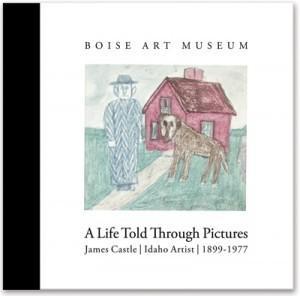
Boise, ID: Boise Art Museum, 2016
James Castle was a self-taught Idaho artist who lived and created art during most of the 20th century. In A Life Told Through Pictures, we learn about how he created is pices from materials that he found in and around his family's home. His subjects were mostly taken from everyday objects and places: a room, a bird, clothes, his house, or his dream house. Castle was deaf from birth and, although he spent some time at the Idaho School for the Deaf and Blind in Gooding, he didn't learn to sign (it wasn't taught at the time), and reading and writing didn't stick since once he got home the family didn't practice. Castle's art became his communication with the world.
This beautiful little book is meant for aspiring school age artists, but it is really very inspirational for artists and nonartists of all ages. It includes images of Castle's art on every page, along with large type text describing his work and life. It comes with a starter kit of inexpensive materials that are easy to replace after use. At the end of the book, there are thought-provoking questions that could spark rich classroom discussions for students of any age. There are also project ideas and instructions to make art pieces out of every day items, like Castle did.
Every public elementary school in Idaho received a copy of A Life Told Through Pictures, and junior highs and middle schools are up next to receive a copy. This title fits equally well in both types of schools, as well as in the art section or in the professional development section of the library. It offers turn-key projects that are perfect for librarian/history or social studies/art teacher collaborations. If you've not seen your school's copy, please check with the person who handles your school's mail.
Dewey: 709.2 Interest Level: K-12
A book for all ages!
Fiction Pairing: The Dot by Peter Reynolds
Web resources:
Boise Art Museum (BAM): find James Castle education resources, an audio version of A Life Told Through Pictures, curricular connections, and a Paper Bag Book activity.
James Castle Collection and Archive: see more of Castle's work, read a more detailed biography, and explore links to more resources.
Boise Department of Arts and History: learn about and get a virtual tour of the James Castle House in Bose. This restoration project is just gettng underway, and this is the "before" version.
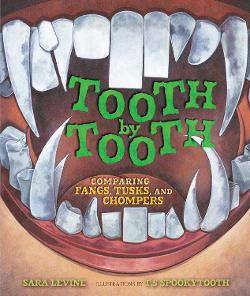
Minneapolis, MN: Millbrook Press, 2016
If it seems improbable that a book about teeth could be a really fun read aloud for the Pre-K to 2nd Grade set, then get a load of Tooth By Tooth; this is informational text for young readers at its best! Levine and Spookytooth work together to create an interactive treat with only the best kind of trick, in that it also works in facts about the differences between mammals and other types of animals with all that tooth, tusk, and fang info. The page layout along with the question and answer structure, will keep the pages turning, too.
Spookytooth's illustrations have a textured collage look and are filled with additional details like signs showing the skull of the animal featured on the page, so readers can really get a look at those teeth. In addition, to make it easier for the reader to match the right teeth with the right animal, humans in the illustrations and then their animal counterpart are shown wearing the same accessories. It's a clever and effective way to help the youngest readers connect the teeth to the animal.
Tooth By Tooth is an excellent choice for any elementary picture book collection or animal book section. Like most high-quality informational books, it includes sections for more information, a glossary, and further reading with websites. When reading this title aloud, please be advised to have mirrors handy for the viewing and counting of teeth!
Dewey: 599.9 Interest Level: PreK-2
Reviews and Awards: Booklist, Kirkus, School Library Journal, Science and Children (NSTA).
Older readers might like: Teeth, Claws & Jaws by Janet Riehecky (Hi/Lo for Grades 5-8).
Young adult readers might like: The Animal Mating Game: The Wacky, Weird World of Sex in the Animal Kingdom by Ann Downer.
Fiction pairing: Big Chomp! by Heather Brown.
On the Web:
DK Findout at http://www.dkfindout.com/us/ has information on types of teeth, the animal kingdom, and lots of other topics.
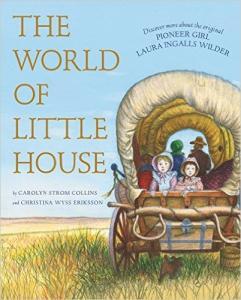
HarperCollins Publishers, 1996
The World of Little House is not a new book, but since I just discovered it, and I'm not sure how I missed it before, and since a late publication date is really on a guideline here, it will be September's book. Afterall, our real purpose is to highlight quality nonfiction for school library collections, and as such, it belongs.
Some of the nonfiction written about Laura Ingalls Wilder has an adult audience in mind, but this title is for Little House fans at the age when they first fall in love with the books. Although Collins and Ericsson address some of the unhappy times in the Ingalls' lives, the content is handled gently, as if Ingalls were friends of ours. And, I suppose, they are.
After the first introductory chapter about the Ingalls and Wilder families (complete with family trees), each chapter focuses on one of the Little House books, beginning with the Big Woods. There is a short summary of Laura's age, her activities and the major events in that book. Floor plans of whever Little Houses are in that book are included, along with illustrations of what the outside of the houses and grounds looked like. The new illustrations by Maze are carefully done to compliment the Garth Williams illustrations that are also used throughout the book.
A delightful part of each chapter is instructions how to make or cook some favorite things in book that is the focus of the chapter. For example, in the Big Woods chapter we learn how to make Molasses-on-Snow Candy, and in the chapter on By the Shores of Silver Lake, we learn how to Waltz and Polka! Unlike the Little House Cookbook, where it is difficult to impossible to find all the ingredients, all the supplies needed for these activities are easy to find and inexpensive. For example, to make butter you need heavy cream, a slotted spoon, and a quart-sized jar with a lid. Easy.
The World of Little House would be helpful for anyone covering hisotry of the pioneers or Westward Expansion. Students who are discovering the Little House books will have a ball with all the new information and activities. Teachers will flip for the content, timeline, photographs, bibliography, and guide to seeing the Little House sites. This one is a must-have.
Dewey: 813.52 Interest Level: Grade 3 and up
Younger readers might like: Laura's Album: A Remembrance Scrapbook of Laura Ingalls Wilder by William Anderson.
Older readers might like: The Wilder Life: My Adventures in the Lost World of Little House on the Prairie by Wendy McClure.
Fiction pairing: The Little House Books by Laura Ingalls Wilder (what else?)
On the Web:
Laura Ingalls Wilder Historic Home and Museum in Mansfield, MO.
*** The museum now has a Traveling Panel Exhibition that will come to your school. There is no charge for the exhibit - they only ask that each school ship it to the next school.***
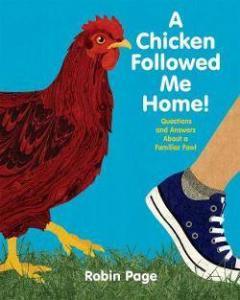
New York: Beach Lane Books, 2015
With the popularity of backyard chickens, being followed home by one is not out of the question. In fact, the author's inspiration for this book came from her neighbor's experience of being adopted by a stray chicken. If it happens to you, be sure to pick upA Chicken Followed Me Home!, so you will know what to expect. In this primer on backyard chicken care, each section is set out with a question like "what do chickens eat?" and "what does a chicken coop look like?" or "will my chicken lay eggs?" and other stuff you never thought you'd want to know about chickens. Interested in hatching chicks? That's covered, too.
The bright digital illustrations have a collage look about them, with wonderful textures that mimic feathers. The chicken Q & A format neatly organizes the content and it makes sense that the narrator, given the unexpected new chicken, has a lot of questions. Through the narrative, we learn that our chicken is a Rhode Island Red hen who will lay eggs (5-6 per week!), and hatch chicks, if introduced to a rooster. It is all subtly funny, and we end up with a flock of chickens, who, we hope, will be following someone else home soon. End pages answer more chicken questions and suggest resources to learn more.
A Chicken Followed Me Home! would make a charming addition to any picture book collection, not to mention inspiration for some industrious student's (and brave parent's) summer-vacation-and-beyond chicken project. Cluck Cluck.
Dewey: 636.5 Interest Level: PreK-2
Reviews & Awards: Booklist, Bulletin of the Center for Children's Books, Horn Book Guide, Horn Book Magazine, Kirkus Reviews, Publishers Weekly Starred, School Library Journal Starred, Science Books and Films (AAAS).
Older elementary students might like: Henrietta's Guide to Caring for Your Chickens by Isabel Thomas.
Middle school/young adult students might like: Urban Gardening and Farming for Teens series from Rosen Publishing, various authors.
Published for Adult, but appropriate for young adults: Animal, Vegetable, Miracle by Barbara Kingsolver.
Fiction Pairing: Interrupting Chicken by David Erza.
On the Web:
The Old Farmer's Almanac has gone digital! It still has all the great information you expect from this staple publication, from last frost to moon phases, and it also has a chicken section.

Minneapolis, MN: Lerner Publications, 2016
With presidential primaries and caucusus underway, and all the accompanying hoopla, it is difficult to not have the presidency on our minds. As U.S. Presidents go, Franklin D. Roosevelt's (FDR) terms (all four of them) were dramatic and noteworthy for many reasons and Linda Crotta Brennan's book sets them out in straightforward accessible language that tells the story, warts and all.
Starting with the first chapter, we get an idea of FDR's privilege and wealth, along with a little history of the Roosevelt family. As we move through the chapters, we learn about FDR and Eleanor Roosevelt's marriage, children, FDR's polio, and his life in public service. Brennan does not gloss over the less flattering elements of FDR's life, rather she explains his infidelities, events like the decision to create internment camps and not accept Jewish refugees during WWII, as less than great decisions made in the context of their time. We also learn a bit about Eleanor's roll in FDR's success and how she became his eyes and ears through her travels around the nation and the world. Eleanor had her husband's ear and a significant amount of influence; FDR's presidency may have looked different, and may not have happened at all, if not for Eleanor.
Even with his flaws, this book leaves no doubt that FDR was the right president for his time. We learn that within the first 100 days of his presidency he was drafting, and Congress was passing, legislation to start pulling the United States out of the Great Depression. And it is hard to imagine anyone who would have worked better with Churchill and Stalin to win WWII. It would have been interesting to get more information about the inspiration that led to the creation of his programs like the CCC, the WPA, and the TVA. Other programs, like FDIC insured banks, Social Security, and the GI Bill, which are still important in the American landscape, were also creations of Roosevelt and his administration. Although it seems as though they've always been around, they've only existed for about 80 years.
A top-notch informational text for secondary students, Franklin D. Roosevelt's Presidency moves through the events of FDR's life with accessible language and a balanced approach. The content includes a helpful timeline, source notes, glossary, bibliography, and resources for further information. It is also loaded with photographs from FDR's life and presidency. Speaking of photographs, the stress of serving as president during some of the most trying years in U.S. history is evident when comparing the portraits of Roosevelt at the beginning and end of this book.
Other books in the Presidential Powerhouses series: George Washington's Presidency, James Madison's Presidency, and John F. Kennedy's Presidency.
Dewey: 793.917 Interest Level: YA
Reviews: School Library Journal
Middle school readers might like: The Presidency of Franklin D. Roosevelt: Confronting the Great Depression and WWII by Don Nardo.
Elementary readers might like: Franklin D. Roosevelt: A Leader in Troubled Times from Time for Kids Biographies.
Fiction pairing: The Not-$o-Great Depression: In which the Economy Crashes, My Sister's Plans are Ruined, My Mom Goes Broke, My Dad Grows Vegetables, and I Do Not Get a Hamster by Amy Goldman Koss.
On the Web:
Franklin D. Roosevelt Presidential Library and Museum with digitized collections, speeches online, video, curriculum guides, and more at http://www.fdrlibrary.marist.edu/ .
The White House website includes short biographies of the presidents and first ladies, an interactive tour of the White House, information on the three branches of government, and much more at https://www.whitehouse.gov/1600/presidents/franklindroosevelt.
Video: FDR on PBS's American Experience online at http://www.pbs.org/wgbh/americanexperience/films/fdr/.
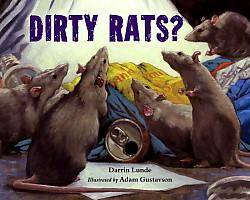
Watertown, MA: Charlesbridge, 2015
Who loves rats? Almost nobody! Lunde's Dirty Rats? might help all of us rat skeptics appreciate the variety of rats in the world and what they do for us. It turns out that rats have gotten a bad rap. Despite their repuation, there are lots of different species of rats all over the world that have nothing to do with garbage or sewers. They are useful, valuable, and some are downright adorable.
Dirty Rats! starts by describing the unsavory creatures that most of us think of as disease-carrying vermine. Soon, though, it moves on to rats that live in tropical rain forests and look more like mice; insect-eating rats in Ecuador that look like otters; and bushy-tailed rats with cool mohawks that live in the Philippines. At last we circle back to the familiar (and somewhat controversial) lab rats. With facts about how rats help the environment, play an important part in the food chain, and help humans, they don't seem all bad.
Darrin Lunde is uniquely qualified to write about rats, and any other mammal, since he manages the mammal collection at the Smithsonian's National Museum of Natural History. The illustrations by Adam Gustavson are beautifully realistic oils that help us understand each rat's habitat. The end papers include a comical line up of additional species of rats, including a giant, extinct variety from three million years ago. It was the size of a rhinosaurus and only it's haunches fit on the page! There are also suggestions for additional online reading.
The text on some double page spreads is different sizes to distinguish between easier and more complex reading, making the book more versatile for more age groups and for read alouds. It would have been helpful to include a pronunciation guide to assist with the Latin names of the species, but the diligent reader can figure it out.
Dirty Rats? is a suitable addition to a K-3 collection on mammal collection and makes a good introduction to the much maligned rat.
Dewey: 599.35 Interest Level: K-3
Awards and Reviews: Booklist; Library Media Collection; Science Books and Film, Kirkus, Publishers Weekly.
Middle grade readers might like: Oh Rats!: The Story of Rats and People by Albert Marrin.
Fiction Pairing: Bad Rats by Eric Drachman
On the Web:
Learn about the Year of the Rat on the Chinese Zodiac.
Audio: Ben by Michael Jackson (written by Don Black and Walter Scharf) on YouTube from the move Ben (Bing Crosby Productions, 1972).
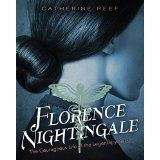
Boston, MA: Clarion Books, 2016
Florence Nightingale did not walk an easy path to become the legendary Lady with the Lamp. She struggled to obtain the educatation and experience she needed to provide the sort of nursing care for which she was so celebrated. Young Flo had to beg and persuade her parents to allow it, and work around road blocks thrown up by Victorian norms for a well-to-do female. Consequently, this is a story of courage and perseverence on many levels over a lifetime, not just at the British Army Hospital in Turkey for two years where Florence became famous. Florence made progress not just in nursing and hospital conditions (where her methods are still in evidence), but for women everywhere.
Catherine Reef deftly weaves in information about Victorian England and the strict social rules imposed on women of the time. Readers will have a better understanding of why Florence, and young women like her, did not disobey and leave their families to find their own way. The idea of women being unable to pursue their own education and career choices can be difficult for modern readers to fully grasp, but this book brings the problem into focus. Reef also gives us insight into the deplorably gruesome condition of hospitals and health care in general, making all of us even more grateful to Florence Nightingale for revolutionizing nursing.
Reef depicts Florence as she was: smart, pretty, ambitious, but with a moral compass that kept her from seeking power for its own sake. She strove to fulfill her purpose against the wishes of her parents, withstood the jelousy and criticism of her older sister, and overcame the resentment she felt toward them when their approval came after her fame. Through it all, she wrestled with depression and other health issues, and yet persevered.
Reef is a regular on starred review, notable, and award lists for good reason, and this biography will undoubtedly rack up accolades, too. It is an interesting and readable page turner; we want to know what happens with Flo! Florence Nightingale: The Courageous Life of a Legendary Nurse belongs on every middle school and high school library's biography shelf. It includes copious notes, additional reading, and an index. It will be out in November, 2016.
Dewey: 921 Interest Level: Grades 6-12
Awards and Reviews: None yet - stay tuned!
Younger Readers might like: Florence Nightingale by Demi
Fiction Pairing: The Scandelous Sisterhood of Prickwillow Place by Julie Berry (girls in Victorian England). The Drummer Boy's Battle: Florence Nightingale by Dave Jackson (British Army Hospital in Crimean War).
On the Web:
The Life and Letters of Florence Nightingale at UAB Libraries from the Univerity of Alabama. Includes more images and letters written by Florence Nightingale.
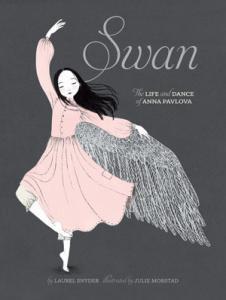
San Francisco, CA: Chronicle Books, LLC, 2015
Put this one at the top of your wish list, because it is a beauty that is sure to please aspiring dancers everywhere! The text is spare and packed with meaning, as if it were poetry; and Morestand's illustrations are delicate and true to the ballet aesthetic.
Anna is a girl of modest means growing up in Czarist Russia, when her mother takes her to the ballet. Anna instantly falls in love with the artform and yearns to go to ballet school. On her second try, she is accepted to the Imperial Ballet School, and the rest, as they say, is history. When she begins training, her natural talent is evident, as is her passionate work ethic. Anna Pavlova, of course, goes on to become a world famous prima ballerina, traveling extensively in her determination to bring ballet to the whole world.
Swan: The Life and Dance of Anna Pavlova, although biographical, is not meant to relay every fact of the dancer's life. Rather, it perfectly conveys her brilliant artistry and spirit. Even her last illness and death are handled beautifully here, as if on the stage. It should be included in any picture book collection.
Dewey: 792.802 Interest Level: K-3
Awards and Reviews: Hornbook Magazine; Kirkus Reviews; Publishers Weekly; School Library Journal starred.
Older readers might like: Alvin Ailey by Andrea Davis Pinkney (illus. J. Brian Pinkney).
YA readers might like: Life in Motion: An Unlikely Ballerina by Misty Copeland.
Fiction pairing: Anglelina Ballerina by Katharine Holabird (illus. Helen Craig).
On the Web:
Anna Pavlova performing The Dying Swan at https://goo.gl/wk5xvL.
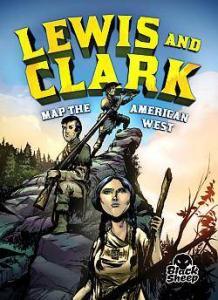
Minneapolis, MN: Black Sheep, Scholastic, 2016
Lewis and Clark get the graphic novel treatment in Lewis and Clark Map the American West as part of the Extraordinary Explorers series from Scholastic! The illustrations are attractive and interesting, the text is clear, and the story is accurate. Although many events and characters are not mentioned in this super-abbreviated version, the sense of adventure and awe comes through and the 24 pages get to the heart of the purpose and danger of the journey. The story is very much about the sequence of events in getting to the Pacific Ocean, not about the characters. We only briefly meet key players in the journey, like Toussaint Charbonneau and Sacagewea, and there are only a few details about Lewis and Clark.
It's a good choice for reluctant readers who are new to Lewis & Clark, but doesn't contain enough detail for students who might already be familiar with the story. There are a few moments that don't quite ring true, but it has elements of quality nonfiction: a table of contents, historical quotes in orange text, glossary, additional facts, a short index and even a few small maps.
While not a stellar example of graphic novel nonfiction, Lewis and Clark Map the American West certainly would be useful as a high-interest/low-vocabulary title and could fit nicely into an elementary graphic novel collection.
Dewey: 917.804 Interest Level: Grades 2-5
Awards and Reviews: None
Another option for Grades 2-5: The Explorations of Lewis and Clark by Gary Jefrey, illustrated by Terry Riley.
Younger readers might like: A Picture Book of Lewis and Clark by David Adler, illustrated by Ronald Himler.
Older Students might like: Lewis and Clark by Samuel Willard (Great Explorers series, 2009).
Fiction Pairing: Seaman: The Dog who Explored the West with Lewis & Clark by Gail Karwoski.
On the Web:
PBS's Lewis & Clark: The Journey of the Corps of Discovery has an interactive map, classroom resources, and a Q & A forum with Ken Burns.
Primary Sources: National Archives at https://www.archives.gov/education/lessons/lewis-clark/#documents.
